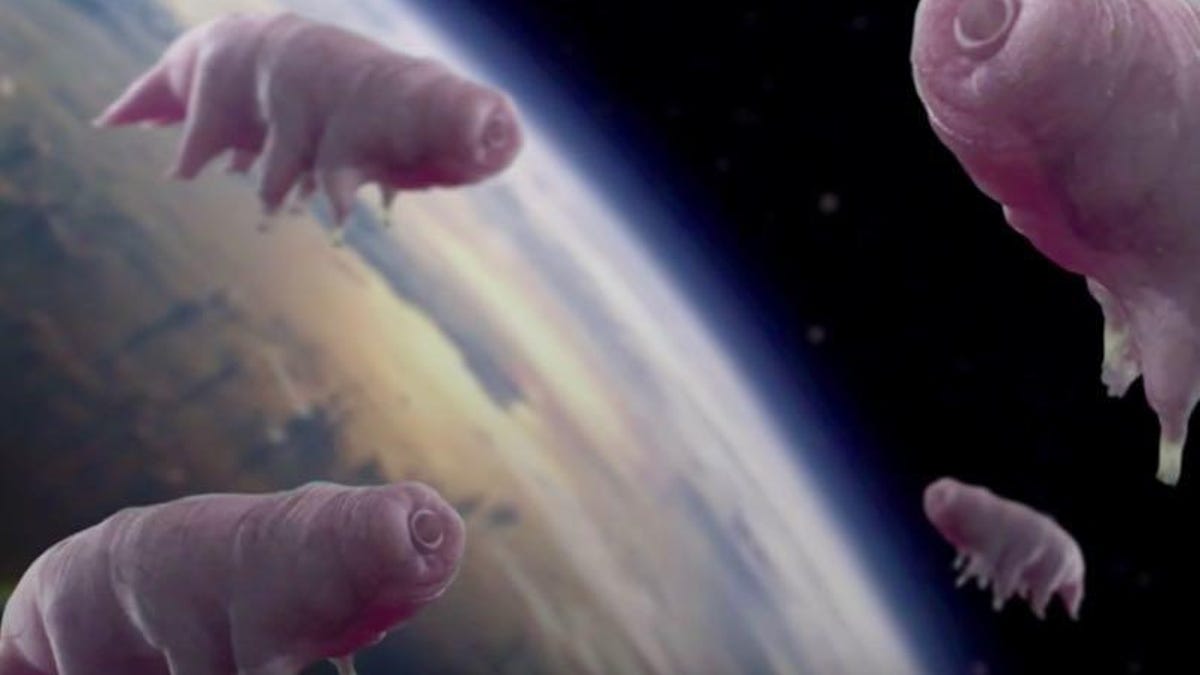Tardigrades are now on the moon thanks to a crashed Israeli spacecraft
The water bears were traveling to the moon, along with human DNA.

This isn't a scientific representation of tardigrades in space. But they sure do look cool floating in orbit.
Tardigrades, affectionately known as water bears, are microscopic animals that can survive in almost any environment. We already know it's possible for scientists to bring tardigrades back to life after a 30-year deep freeze. As "extremophiles," tardigrades can shut down their metabolism and survive in hostile conditions for long periods. But can they survive in space, more specifically on the moon?
Back in April, an Israeli spacecraft called Beresheet, which carried thousands of dehydrated tardigrades (among other cargo), crashed on the moon. Some people wondered if the water bears could survive.
One of those people was Arch Mission Foundation founder Nova Spivack. Arch Mission Foundation is a nonprofit whose main goal is to create a "backup of planet Earth."
The Israeli spacecraft was transporting Arch Mission's first lunar library, a digital archive holding the equivalent of 30 million pages of information. It also carried human DNA samples and thousands of dehydrated tardigrades. It's unknown how much of the cargo actually ended up on the moon's surface following the crash.
Based on Arch Mission's analysis of the spacecraft's path as well as the makeup of the lunar library itself, Spivack told Wired on Monday that he's confident the library, a "DVD-sized object made of thin sheets of nickel," survived the crash mostly intact.
That doesn't mean the DNA or water bears are in good shape.
"We sent enough DNA to regenerate life on Earth, if necessary," Spivack tweeted Tuesday. "Although it would require more advanced biotech than we have to do that. At least our DNA is offsite now. But note that cells and DNA cannot survive or reproduce on the moon. Yet if retrieved they could be useful."
Spivack noted that the tardigrades cannot reproduce on the moon, regardless.
About the Tardigrades in the Lunar Library: Some are sealed in epoxy with 100 million human, plant and microorganism cells. Some are encapsulated onto the sticky side of a 1cm square piece of Kapton tape that is sealed inside the disc stack. They cannot reproduce on the Moon.
— Nova Spivack (@novaspivack) August 6, 2019
"About the tardigrades in the Lunar Library: Some are sealed in epoxy with 100 million human, plant and microorganism cells," Spivack tweeted Tuesday. "Some are encapsulated onto the sticky side of a 1cm square piece of Kapton tape that is sealed inside the disc stack. They cannot reproduce on the moon."
Even though the dehydrated tardigrades can't spring to life on the moon, they could theoretically be gathered, revived and studied to teach us about their time there.
"It is not likely that cells can survive on the moon without a lot more protection from radiation," Spivack added. "However the human cells, plant cells and micro organisms we sent could be recovered, studied and their DNA extracted -- perhaps to be cloned and regenerated, far in the future."
Arch Mission Foundation, Nova Spivack and SpaceIL didn't immediately respond to a request for comment.

